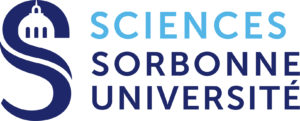Costantino CRETON
 |
Directeur de Recherches
CNRS Tél. : 33 (0) 1 40 79 46 83 |
Short CV
1985 Diplôme d’ingénieur: Ecole Polytechnique Fédérale de Lausanne (Suisse)
1991 PhD, Cornell University, Materials Science and Engineering (USA)
1992 Visiting Scientist, IBM Almaden Research Center, Polymer Physics
1993 Post-Doctoral Fellow at Laboratoire PCSM of the ESPCI
1994 CNRS as chargé de Recherche at the Laboratoire PCSM of the ESPCI
1999 Habilitation, Université Pierre et Marie Curie
2001 Directeur de Recherches at the CNRS at the Laboratoire PCSM, then PPMD, now SIMM of the ESPCI
Research Areas
– Adhesion of Polymers: relation between molecualr structure and fracture of interfaces. Pressure-sensitive-adhesives. Rheology of adhesives.
– Fracture of elastomers: materials science and mechanics.
– Hydrogels: large strain mechanical properties, adhesion and fracture
Current functions
– Group leader Soft Polymer Networks, created in 2009.
– Scientific Chairman of the technology area "Performance Plastics" of the Dutch Polymer Institute
Research
The research activities of our group focus on polymer mechanical properties
and often contain both a deformation and fracture component and an interface and adhesion component. We are particularly interested in the processes where deformation of the material is in the large strain regime and in the understanding of macroscopic fracture or adhesion processes.
For all the specific topics that we have investigated, we try to establish a connection between the molecular structure or the material organization at the nano and micro level, and the macroscopic mechanical properties. Often in fracture processes, complex and inhomogeneous deformations occur before an actual macroscopic fracture takes place. The undersanding of these large deformation processes which modify the structure of the material are essential to understand the fracture process itself. In essence for deformable materials, it is not the undeformed material which fractures but it is often a highly deformed and modified structure, which needs specific characterization methods.
We have developed specific techniques adapted to the investigation of the fracture of highly deformable materials, which generally use in-situ observation of deformation mechanisms and confined polymer layers. In addition of course we use standard tools of polymer science such as DSC, rheology in the linear regime, NMR and FTIR for the characterization of the chemical structure.
A second key aspect of our work is the behavior of materials at interfaces. Because interfaces impose a boundary condition to the deformation, understanding their structure and how this structure influences the boundary conditions is essential to understand the deformation behavior. Often interfaces are also weak mechanical points and improving, or more generally controlling the level of adhesion at an interface, is an important practical and scientific goal.
More information on research can be obtained from pages of Research Groups and on my personal pages.
Some recent review papers
Creton, C. and Ciccotti, M. (2016) "Fracture and Adhesion of Soft Materials", Reports On Progress In Physics, 79(4): 046601.
Creton, C. (2017)"50th Anniversary Perspective: Networks and Gels: Soft but Dynamic and Tough", Macromolecules, 50(21): p. 8297-8316.


